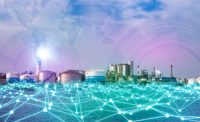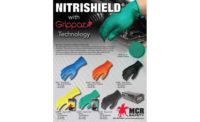About 2.8 million nonfatal workplace injuries and illnesses were reported by private industry employers in 2017. That’s more than 100,000,000 production days lost due to work-related injuries. Because of this, safety training is a very important part of the onboarding process for a new hire - especially for those working in an environment with many machines or hazardous materials. Today’s technology, like virtual and augmented reality, digital renderings and digital twinning (a digital version of a real-world physical item) can significantly improve employee safety training through greater retention and making scenarios far more realistic.
Aside from the ability to create a more useful training experience, virtual training can also provide significant cost benefits: instead of employees having to travel to a training location one or even multiple times, they can access the training online, from anywhere. This is especially useful for remote or hard-to-reach areas (such as an offshore oil and gas platform), but it also readily applies to any training scenario.
Below are some examples of how today’s technology can improve employee training.
Digital Floor Plans
Factory floors are filled with complex machines and components that require in-depth training to operate properly and safely. To reduce workplace injury, many companies prefer that employees learn the proper safety procedures before operating this equipment on the factory floor. But it seems difficult to effectively train employees without a hands-on experience with the actual equipment. Because of this, digital maps or renderings and virtual tours have been gaining popularity as training tools.
With these interactive options, manufacturers can guide new hires through a 3D digital replica of their factory floors to facilitate the safety and training process. As trainees move throughout the virtual version of their company's factory floor, they can interact with digital replicas of the machines, conveyor belts, robotic arms and other key features and equipment that populate their new work environment.
Virtual Testing
Immersive virtual tours of a manufacturer's factory floor is an efficient and immersive way to introduce a new employee into a work environment. When on the tour, a trainee will not only have a 3D view of each machine that they will operate, but can learn important training and safety information along the way. Drawing from an embedded knowledge base, virtual tours can use interactive icons and windows to provide new hires with critical training and safety information corresponding to each stop along the virtual tour. Tours can even take it a step further and integrate a quiz feature that will help new hires confirm and reinforce what they've learned.
For example, one of the construction industry’s leading heavy equipment manufacturers, Caterpillar, is using VR-based training programs to help keep workers safe. Caterpillar’s training uses real life scenarios to immerse employees into a virtual jobsite and allows for greater retention than traditional learning.
Immersive Emergency & High Risk Training
3D digital replication is also helpful when acquainting new employees with especially hazardous environments, where hands-on safety training is particularly difficult or dangerous. Just learning from manuals and diagrams may not give trainees the best learning experience they need to safely operate the machinery located in such areas. Because of this, an interactive virtual replica or tour of the hazardous environment can give trainees an immersive experience with critical safety procedures without any exposure to the hazards of the environment itself.
Currently, there are several companies using virtual reality technology for this purpose. The world’s largest chemical company, BASF, uses VR training for employees to learn safety basics, including preventing accidents in the office to proper firefighting methods in the factory.
Another example is the large oil and gas company Royal Dutch Shell. Shell helps employees prepare to handle dangerous, high-stress emergency situations, such as gasoline tanker spills that are engulfed in flames, with virtual and augmented reality technology.
But the manufacturing and oil and gas industries are not the only fields that are using digital and virtual technologies for training - healthcare, sales, and tourism industries also are using these technologies to train employees. For example, with virtual and augmented reality, medical professionals are able to explore a number of different procedures and learn how to care for patients without the risk involved. Additionally, sales employees can use virtual training to work on negotiation skills and techniques before going into an in-person meeting.
Today’s new technologies can help companies better train their employees for many different and potentially dangerous situations. Which will save companies time and money in the long run.



